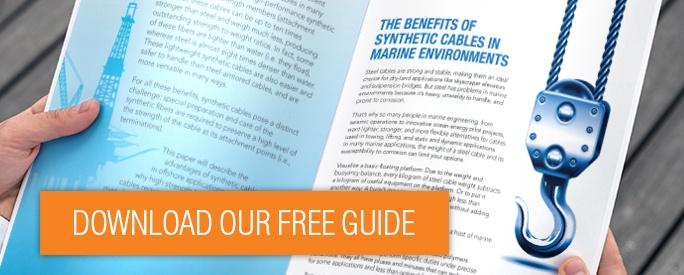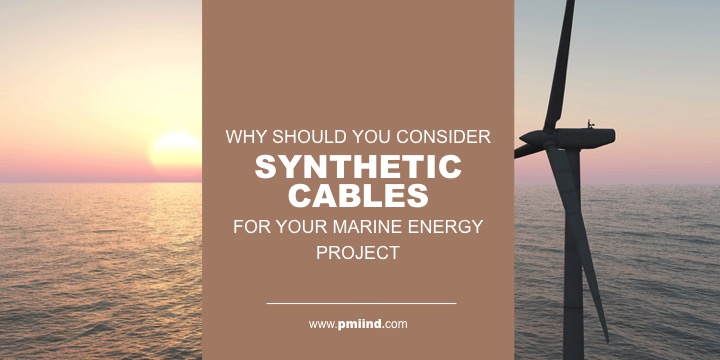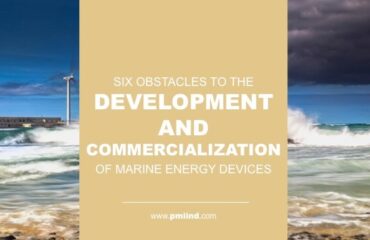Steel cables have unmatched strength and stability, which is why they’re so common in dry-land uses like elevators, construction cranes, and suspension bridges. But steel cables have troubles in marine environments: they rust, they sink, and they’re just hard to handle easily.
Synthetic cables are showing up these days in a lot of marine engineering projects, from seismic operations to cutting-edge marine-energy projects. They’re lighter, stronger, more flexible, and they float, making them a great choice for towing, lifting, and a host of static and dynamic applications.
Marine energy project managers often find that steel’s weight and susceptibility to corrosion limits their options. To keep things simple, let’s think about a basic floating platform. The weight and buoyancy balance requirements mean that every kilogram of steel cable weight subtracts a similar weight of equipment on the platform.
That means subtracting cable weight adds a lot more options in a wide array of marine applications, including ocean-energy initiatives. A meter of synthetic cable weighs about one-fifth of a similar length of steel cable. Similarly, a kilogram of synthetic cable has about five times the strength-to-weight ratio of a similar weight of steel.

Synthetic Cable Basics: Aramid vs. LCP
Synthetic fibers use advanced polymers that can be engineered to perform specific duties under precise conditions. They all have pros and cons that can make them optimum for some applications and less than ideal for others.
Marine applications typically use two kinds of synthetic fibers:
- Aramid, including the well-known Kevlar® brand. These fibers work great in transmission cables because they have low elongation, which keeps the conductor (fiber optics or copper) from stretching and breaking. They also have high tensile strength and high modulus.
- LCPs (liquid crystal polymers), including the Vectran® brand. Though similar to aramids, they have a different chemical structure. LCP has comparable elongation characteristics to aramids but provides superior abrasion resistance.
There are two potential issues with synthetics that do not affect steel: they’re more vulnerable to abrasion and breakdown from exposure to ultraviolet light. That might not be a problem with a cable that rests at the bottom of the ocean, but it can be a challenge for cables that sit outside and get reeled in and out frequently.
The chemical structure of synthetic cables can be tweaked to suit specific applications. Ropes can be designed to stretch a lot or remain static, depending on how they will be used.
Attachment points for synthetic cables
There’s a lot to like about synthetic cables and ropes in marine energy applications, but there’s one area where steel has an advantage: the method of attachment or termination.
Steel cable terminations can use helical rods to get a firm, trustworthy grip on the end of a length of steel.
Furthermore, the termination has to be designed specifically for the way it will be used—especially in applications like optical and/or electrical transmission. Since all marine energy projects transmit electricity to the mainland grid, this is a key concern.
The incredible strength of synthetic cables can be undermined if you choose the wrong kind of termination. We’ll discuss the fundamentals of synthetic strength member termination in an upcoming blog post.
At PMI, our synthetic strength member terminations have been carefully designed and tested to preserve the strength of the cables they’re attached to. We’ve been building rugged premium accessories for the deep-sea cable industry for decades, so we know what it takes to get the best performance from synthetic cables and their attachment points in marine energy projects.
Related articles:





